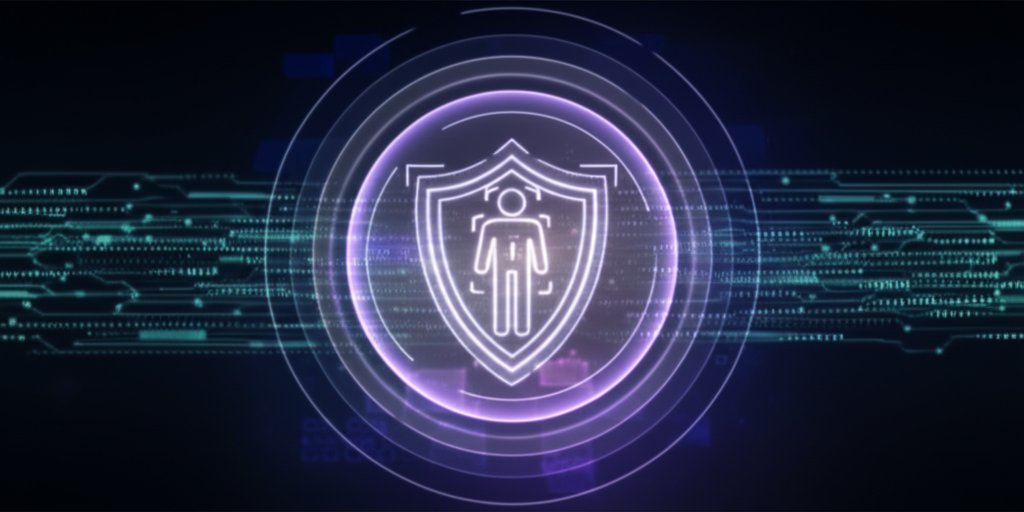The Small Business & User's Ultimate Guide to Zero Trust Network Access (ZTNA)
In a world where cyber threats evolve faster than we can say "data breach," traditional security measures just don't cut it anymore. We used to think of our digital networks like a castle: a strong perimeter, and once you're inside, you're pretty much trusted. But what happens when attackers are already inside, or when your team is working from their kitchen tables, accessing critical applications from all corners of the globe? That old "castle and moat" model crumbles, leaving your valuable data vulnerable.
Why Traditional Security Fails and ZTNA is Your Solution
That's precisely where Zero Trust Network Access (ZTNA) steps in. It represents a fundamental shift in how we approach security, embracing a philosophy of "never trust, always verify."
What is ZTNA?
Simply put, ZTNA ensures that no user or device, whether inside or outside your traditional network perimeter, is inherently trusted. Every access request to any resource is meticulously verified based on identity, device posture, and context, granting only the absolute minimum necessary access.
For small businesses and everyday internet users, this isn't just a fancy tech term; it's a practical, powerful way to:
- Safeguard Your Data: Protect sensitive information from unauthorized access.
- Secure Remote Workers: Grant safe access to critical applications, no matter where your team is located.
- Stop Cyber Threats: Prevent lateral movement by attackers, significantly reducing the impact of potential breaches.
You might even find yourself wanting to secure your home network with these principles!
We understand that diving into advanced cybersecurity concepts can feel overwhelming, especially if you don't have a dedicated IT department or a computer science degree. That's why we've compiled this ultimate, no-nonsense resource guide. It's designed to empower you with the knowledge and tools you need to understand, implement, and benefit from ZTNA, helping you secure your digital life and business.
How We Chose These ZTNA Resources
When curating this list, our goal wasn't just to throw a bunch of technical tools at you. We focused on resources that genuinely simplify ZTNA and make it accessible for small businesses and individual users, for example, by prioritizing solutions with intuitive dashboards and clear setup guides. Here's what drove our selections:
- Ease of Use & Implementation: We prioritized solutions and guides that are straightforward to set up, manage, and integrate, even with limited technical expertise.
- Relevance to Small Businesses & Everyday Users: We looked for resources specifically designed or highly applicable to the needs and budgets of smaller operations, often emphasizing cloud-native and scalable options.
- Cost-Effectiveness: While ZTNA is an investment, we highlighted options that offer excellent value, including free resources and affordable premium tools.
- Actionable & Practical Guidance: Theoretical knowledge is good, but practical steps are better. We favored resources that provide clear "how-to" advice.
- Focus on Core ZTNA Principles: Every resource aligns with the "never trust, always verify" ethos, emphasizing identity verification, least privilege access, and continuous monitoring.
- Support & Community: We considered resources that offer good documentation, customer support, or active communities for troubleshooting and learning.
It's important to note that while we're highlighting a range of fantastic tools, we're not providing specific affiliate links in this guide. We also can't provide screenshots or guarantee real-time pricing, as these are subject to change. Always check the vendor's official website for the most current information.
Now, let's dive into the resources that can help you secure your digital perimeter.
Essential ZTNA Tools & Solutions for SMBs
These tools are designed to put ZTNA into practice without requiring an army of IT specialists. They make it easier to control who accesses what, from where, and with what device.
1. Cloudflare Access
Cloudflare Access is part of Cloudflare's broader Zero Trust platform, designed to replace corporate VPNs with a faster, more secure alternative. It works by enforcing identity and device posture at the edge of Cloudflare's global network, ensuring only authorized users on healthy devices can reach your applications, whether they're on-premises or in the cloud. We really like how it integrates seamlessly with popular identity providers like Google Workspace and Okta, making it incredibly user-friendly for businesses already using those services. It creates a software-defined perimeter around your applications, not your network, which is key for modern distributed teams. It's one of those solutions that truly embodies the "never trust, always verify" principle, moving access control closer to the resources themselves.
Why It Made the List: Its global network makes it fast and reliable, and its native integration with common identity providers simplifies setup significantly. It scales beautifully from small teams to larger organizations and offers a robust free tier for basic use, making it highly accessible for small businesses. It's a truly cloud-native ZTNA solution that doesn't require complex hardware.
Best For: Small to medium-sized businesses looking for a cloud-native ZTNA solution to secure web applications and internal tools, especially those already using cloud identity providers.
Pros:
- Strong free tier for up to 50 users and 5 applications.
- Easy integration with existing identity providers (Google Workspace, Okta, etc.).
- Leverages Cloudflare's global network for speed and reliability.
- Granular access policies based on identity, device, and location.
- No need for a traditional VPN, simplifying remote access.
Cons:
- Configuration might have a slight learning curve for absolute beginners without any cloud experience.
- Advanced features can quickly lead to higher costs for larger deployments.
2. Twingate
Twingate offers a modern approach to secure remote access, positioning itself as a direct VPN replacement built on Zero Trust principles. What's particularly appealing about Twingate is its focus on ease of deployment and user experience. It uses a network of "Connectors" deployed in your infrastructure to create secure, encrypted tunnels to specific applications and resources, rather than granting broad network access. This micro-segmentation approach ensures that even if one application is compromised, an attacker can't easily move laterally to other parts of your network. We've found that it significantly reduces the attack surface and minimizes the impact of potential breaches, giving small businesses a powerful security boost without the usual headaches associated with enterprise-grade solutions.
Why It Made the List: Twingate excels in simplicity and speed of deployment, which is crucial for SMBs. Its lightweight client and agent-based approach make it incredibly easy for users, and its strong security posture (zero public inbound ports) offers peace of mind. They offer a Starter plan that's very attractive for smaller teams.
Best For: Small businesses and startups needing a user-friendly, fast, and secure VPN alternative for remote access to internal applications and resources.
Pros:
- Extremely easy to set up and manage, often taking minutes instead of hours.
- Excellent user experience with a lightweight client.
- Significantly improves security by eliminating open inbound ports and preventing lateral movement.
- Offers a free Starter plan for up to 5 users, 2 remote networks, and 2 connectors.
- Strong focus on granular, application-specific access.
Cons:
- While easy, some initial setup of "Connectors" requires basic network understanding.
- Pricing for larger teams can add up, though it's competitive for its feature set.
3. NordLayer
NordLayer, from the creators of NordVPN, is specifically designed for businesses to provide secure remote access and implement Zero Trust principles. It's built around the idea of a Software-Defined Perimeter (SDP), which dynamically creates a secure network segment for each user's authenticated session. This means your team gets secure access to business resources without exposing your entire network to the internet. We often recommend NordLayer because it manages to simplify complex security features, making them accessible to small businesses that don't have extensive IT teams. Its user-friendly interface and focus on a "business VPN" experience with ZTNA capabilities make it a strong contender for those transitioning away from traditional VPNs.
Why It Made the List: NordLayer makes ZTNA approachable by combining familiar VPN-like simplicity with robust Zero Trust security features. Its comprehensive suite includes dedicated servers, site-to-site tunnels, and detailed activity logs, all managed from a centralized dashboard. It's particularly strong for businesses with hybrid workforces or multiple office locations.
Best For: Small to medium businesses looking for an all-in-one secure remote access solution that combines ease of use with strong Zero Trust features and network segmentation.
Pros:
- User-friendly interface and simple deployment process.
- Combines secure access with advanced threat prevention features.
- Offers dedicated servers and IP addresses for business use.
- Good for securing multiple office locations and remote workers.
- Competitive pricing, especially for smaller teams (starts around $7-9/user/month).
Cons:
- While simplified, some advanced network configurations might still require basic technical knowledge.
- Relies on a client application, which may not be ideal for all "agentless" preferences.
4. Perimeter 81
Perimeter 81 provides a unified platform for network security, blending ZTNA with features like VPN-as-a-Service, Firewall-as-a-Service, and Device Posture Check. What we appreciate about Perimeter 81 is its holistic approach to security—it doesn't just do one thing well, but offers a suite of tools that work together seamlessly. For small businesses, this means you can consolidate several security functions into one platform, simplifying management and reducing overhead. It's designed to give you granular control over who can access what, whether it's cloud apps, on-premise resources, or even specific network segments. They've put a lot of effort into making enterprise-grade security accessible to businesses that might not have enterprise budgets or IT teams.
Why It Made the List: Perimeter 81 stands out for its comprehensive security offering beyond just ZTNA, including secure web gateways and robust device posture checks, all from a single pane of glass. Its cloud-based platform is easy to deploy and manage, making it a powerful choice for growing businesses needing centralized control.
Best For: Growing small to medium businesses seeking a comprehensive, unified network security platform that combines ZTNA with other essential security services.
Pros:
- Unified platform for ZTNA, VPN, secure web gateway, and device posture.
- Cloud-based and easy to deploy and scale.
- Strong granular access controls and identity integration.
- Excellent for businesses with complex remote access or hybrid environments.
- Competitive pricing starting around $8/user/month for basic plans.
Cons:
- The sheer number of features might be overwhelming for absolute beginners.
- Requires client installation for full functionality, though agentless options exist for specific use cases.
Free Resources for Getting Started with ZTNA
You don't always need to spend a fortune to start your ZTNA journey. These free resources offer foundational knowledge, best practices, and even tools to begin implementing Zero Trust principles.
5. NIST Special Publication 800-207: Zero Trust Architecture
The National Institute of Standards and Technology (NIST) is a leading authority in cybersecurity, and their "Zero Trust Architecture" publication is considered the gold standard for understanding ZTNA. While it can get technical, NIST 800-207 provides the foundational concepts, logical components, and deployment models for Zero Trust. We've included it because even if you just skim the executive summary and key principles, it offers an authoritative framework that helps you understand why ZTNA works and what its core tenets are. It's not a "how-to" guide for beginners in the traditional sense, but it provides the essential conceptual background against which all ZTNA solutions are built. Think of it as the ultimate blueprint.
Why It Made the List: This is the definitive conceptual guide for Zero Trust. Understanding its principles, even at a high level, helps small businesses make informed decisions when evaluating vendors and implementing ZTNA. It's freely available and an indispensable reference.
Best For: Anyone wanting a deep, authoritative understanding of the core principles and architecture behind Zero Trust, guiding strategic decisions.
Pros:
- Authoritative and comprehensive framework.
- Freely accessible from the NIST website.
- Provides a common language and understanding for ZTNA.
- Helps in evaluating commercial solutions against established standards.
Cons:
- Can be highly technical and dense, requiring effort to digest.
- Not an implementation guide for specific products.
6. CISA Zero Trust Maturity Model
The Cybersecurity and Infrastructure Security Agency (CISA) provides the "Zero Trust Maturity Model," which offers a practical roadmap for organizations to adopt Zero Trust. Unlike NIST's more conceptual framework, CISA's model breaks down ZTNA implementation into five pillars (Identity, Devices, Networks, Applications & Workloads, Data) and three stages of maturity (Traditional, Initial, Advanced, Optimal). This resource is incredibly valuable because it helps you assess where you are on your ZTNA journey and what practical steps you can take to move forward. It’s less about a specific technology and more about the journey, which is exactly what small businesses need—a way to think about progress, not just perfection.
Why It Made the List: This free resource provides a clear, actionable path for organizations of any size to measure and improve their Zero Trust posture. It makes ZTNA adoption seem less daunting by breaking it into manageable stages.
Best For: Small businesses looking for a structured, step-by-step roadmap to assess and advance their Zero Trust implementation without getting lost in technical jargon.
Pros:
- Provides a clear maturity model for ZTNA adoption.
- Breaks down ZT into understandable pillars.
- Helps organizations self-assess and prioritize next steps.
- Freely available and regularly updated.
Cons:
- Still requires some interpretation to apply to very specific business contexts.
- Not a tool itself, but a guidance document.
7. Google Workspace / Microsoft 365 Built-in Security Features (MFA, Device Management)
Many small businesses already rely on cloud productivity suites like Google Workspace or Microsoft 365. What you might not realize is that these platforms offer powerful built-in security features that are foundational to Zero Trust. Think Multi-Factor Authentication (MFA), device management, and conditional access policies. Enabling MFA for all users is arguably the single most impactful Zero Trust step you can take for free (or for the cost of your existing subscription). These platforms also allow you to enforce device health checks (e.g., ensuring devices are encrypted or have up-to-date antivirus) before granting access to applications. We really encourage leveraging these existing tools because they're already part of your ecosystem, meaning less new software to learn or buy.
Why It Made the List: These ubiquitous platforms offer robust, often underutilized, security features that directly support ZTNA principles like strong identity verification and device posture assessment, usually at no additional cost beyond your subscription.
Best For: Any small business already using Google Workspace or Microsoft 365 that wants to leverage existing tools to implement foundational Zero Trust security without additional investment.
Pros:
- Already integrated into widely used productivity suites.
- MFA is a critical, high-impact ZTNA component.
- Device management features allow for basic device posture checks.
- Often included in existing subscription costs.
Cons:
- Features might not be as comprehensive as dedicated ZTNA solutions.
- Requires active configuration and management to be effective.
Premium Learning & Guidance Options
Sometimes, dedicated learning is the best investment. These resources offer structured courses and expert insights to deepen your understanding.
8. Online Cybersecurity Courses (Coursera, Udemy, Pluralsight)
Platforms like Coursera, Udemy, and Pluralsight offer a wealth of cybersecurity courses, including those specifically focused on Zero Trust. While not free, they represent a relatively affordable way to gain structured knowledge from industry experts. You can find courses ranging from "Introduction to Cybersecurity" that cover ZTNA basics to more specialized "Implementing Zero Trust" modules. We often point people to these because they allow you to learn at your own pace, often with practical exercises. Look for courses that emphasize practical application and vendor-agnostic principles first, before diving into specific product tutorials. It's a great way to empower yourself or your key team members with the knowledge to make informed security decisions.
Why It Made the List: These platforms offer structured, on-demand learning that's highly accessible. Many courses are designed for beginners or those transitioning into cybersecurity, making ZTNA less intimidating.
Best For: Individuals and small business owners who want to systematically learn about cybersecurity and ZTNA principles at their own pace.
Pros:
- Flexible, self-paced learning.
- Wide range of courses for different skill levels.
- Often includes practical exercises and quizzes.
- Certificates of completion can validate knowledge.
Cons:
- Requires a time commitment.
- Quality can vary, so research course reviews before committing.
- Can be an additional cost (though many offer free trials or affordable subscriptions).
9. Cybersecurity Consulting / Managed Security Service Providers (MSSPs)
For small businesses that genuinely lack the internal expertise or time to implement ZTNA, engaging a cybersecurity consultant or a Managed Security Service Provider (MSSP) can be an invaluable investment. These professionals specialize in assessing your current security posture, designing a ZTNA strategy tailored to your specific needs, and often managing the implementation and ongoing monitoring. While certainly a premium option, it can save you significant time, stress, and potential costs from missteps. We've seen many small businesses try to DIY complex security only to realize they're in over their heads. An MSSP can effectively become your outsourced IT security department, ensuring your ZTNA rollout is handled by experts. Don't be afraid to ask for help when you need it.
Why It Made the List: For businesses with limited internal IT resources, an MSSP is the most direct path to a professional and effective ZTNA implementation, providing expertise and continuous management.
Best For: Small businesses without dedicated IT security staff who need expert guidance and ongoing management for their ZTNA deployment.
Pros:
- Access to expert knowledge and specialized tools.
- Customized ZTNA strategy and implementation.
- Reduces internal workload and frees up staff.
- Ongoing monitoring and incident response.
Cons:
- Can be a significant financial investment.
- Requires careful vetting to find a trustworthy and competent provider.
Community & Collaborative Resources
Learning from others and staying current with industry discussions is vital in the fast-paced world of cybersecurity.
10. Reddit r/cybersecurity and r/sysadmin
Reddit might not be the first place you think of for professional cybersecurity advice, but its communities, particularly r/cybersecurity and r/sysadmin, are incredibly active and resourceful. You'll find professionals discussing new threats, sharing insights on ZTNA implementations, asking for recommendations, and offering troubleshooting tips. It's a goldmine for real-world perspectives and often provides answers to niche questions that official documentation might not cover. We particularly like these subreddits because you get a diverse range of opinions, from seasoned veterans to those just starting out, and you can often find candid reviews or experiences with specific ZTNA products. Just remember to critically evaluate advice, as it comes from a diverse community.
Why It Made the List: These subreddits offer a vibrant, real-time community where you can ask questions, learn from others' experiences (both good and bad), and stay updated on the latest discussions around ZTNA and general cybersecurity.
Best For: Individuals and small business owners seeking informal advice, product reviews, troubleshooting help, and staying current with cybersecurity trends from a community of practitioners.
Pros:
- Vast and active community.
- Real-world insights and practical advice.
- Free to access and participate.
- Great for crowdsourcing opinions on ZTNA tools.
Cons:
- Information can be unstructured and requires critical evaluation.
- Not always tailored to specific small business contexts.
11. Cybersecurity-Focused LinkedIn Groups
LinkedIn offers numerous professional groups dedicated to cybersecurity, Zero Trust, and network security. These groups are often moderated by industry leaders and provide a platform for more structured discussions, sharing of whitepapers, webinars, and job opportunities. Unlike Reddit, the focus here is generally more professional and often involves direct engagement with vendors or experts. Joining relevant groups allows you to network, ask targeted questions about ZTNA implementation for small businesses, and keep an eye on industry thought leadership. It's a fantastic way to build your professional network and tap into a collective intelligence without leaving your desk. Look for groups specifically about "Zero Trust," "Cybersecurity for SMBs," or "Cloud Security."
Why It Made the List: LinkedIn groups provide a professional environment for networking, asking expert-level questions, and accessing curated content related to ZTNA and broader cybersecurity topics, often with direct input from industry practitioners.
Best For: Professionals and small business owners looking for industry insights, networking opportunities, and more curated discussions on ZTNA implementation.
Pros:
- Professional networking opportunities.
- Access to industry experts and curated content.
- Focused discussions on specific cybersecurity topics.
- Often a source for webinars, whitepapers, and events.
Cons:
- Engagement can vary by group.
- Requires a LinkedIn profile and active participation to get the most out of it.
Enhancing ZTNA Principles with Supporting Tools
While not direct ZTNA solutions, these tools reinforce key Zero Trust principles like identity verification and device security, making your overall posture stronger.
12. Password Managers with MFA Integration (e.g., 1Password, LastPass)
A core tenet of Zero Trust is robust identity verification. That starts with strong, unique passwords and and, critically, Multi-Factor Authentication (MFA). Enterprise-grade password managers like 1Password and LastPass (or their business-focused equivalents) don't just store your passwords securely; they also often integrate with or manage MFA codes, encourage unique passwords for every service, and can even help enforce password policies. We can't overstate the importance of strong identity for ZTNA—it's the first line of defense. By ensuring every account has a unique, strong password and is protected by MFA, you're dramatically reducing the risk of unauthorized access, which is exactly what Zero Trust aims to prevent. They provide a vital layer of protection for all your accounts, a prerequisite for any ZTNA strategy.
Why It Made the List: Strong password management combined with MFA is a non-negotiable foundation for any Zero Trust strategy. These tools make it easy for individuals and teams to implement and maintain excellent identity hygiene.
Best For: Every individual and small business looking to implement robust identity protection through strong, unique passwords and ubiquitous MFA across all digital services.
Pros:
- Generates and stores strong, unique passwords.
- Integrates with or manages MFA codes.
- Simplifies secure login for multiple services.
- Available across multiple platforms (desktop, mobile, browser).
Cons:
- Requires consistent use and training to be effective across a team.
- Subscription costs for premium features and team versions (typically $3-8/user/month).
13. Secure Browsers with Enhanced Privacy Features (e.g., Brave, Firefox with extensions)
Your browser is often your primary interface with the internet and cloud applications, making its security crucial for Zero Trust. Browsers like Brave offer built-in ad and tracker blocking, fingerprinting protection, and even a Tor-integration option for enhanced anonymity. Firefox, with its robust extension ecosystem, allows you to add powerful privacy and security add-ons (like uBlock Origin, Privacy Badger, HTTPS Everywhere). While these aren't ZTNA solutions themselves, they contribute to a "healthy device posture" and reduce the risk surface for your users. A secure browser helps ensure that the 'device' part of 'identity and device' in ZTNA is as strong as it can be, reducing the chances of malware or tracking compromising user sessions or data. It's about taking control of your digital environment.
Why It Made the List: These browsers contribute to device security and user privacy, which are foundational to ZTNA. By reducing tracking and malware risks, they help ensure device integrity before granting access to sensitive resources.
Best For: Individuals and small businesses seeking to enhance device security and user privacy at the endpoint, complementing a broader ZTNA strategy.
Pros:
- Enhances privacy by blocking ads and trackers.
- Reduces exposure to malicious scripts and phishing attempts.
- Most are free and open-source.
- Customizable with various security-focused extensions.
Cons:
- Requires users to actively choose and configure them.
- May occasionally break website functionality due to aggressive blocking.
Hidden Gems & Overlooked Principles
Sometimes the most powerful resources aren't the biggest names but the fundamental shifts in mindset or less obvious tools.
14. "Least Privilege" Mindset & Regular Access Reviews
Zero Trust isn't just about technology; it's a philosophy. One of its most critical components, often overlooked, is the "least privilege" principle. This means users (and devices) should only be granted the minimum access necessary to perform their job functions—nothing more, nothing less. Regularly reviewing and revoking unnecessary access is a fundamental, free, and incredibly powerful Zero Trust practice. This isn't a tool you buy, but a discipline you implement. Think about it: if an account is compromised, the damage is strictly limited to what that account absolutely needed to do. We've seen too many businesses where employees accumulate broad access over time, creating massive security holes. Make this a quarterly or even monthly habit.
Why It Made the List: This principle is foundational to ZTNA and can be implemented with almost zero cost. It drastically reduces the attack surface and potential damage from breaches by ensuring users only have access to what they truly need.
Best For: Every small business and individual, as a core, ongoing Zero Trust practice to limit risk without needing specific software.
Pros:
- No cost to implement (just time and discipline).
- Significantly reduces potential damage from a breach.
- Improves overall security posture immediately.
- A core principle that enhances any ZTNA tool's effectiveness.
Cons:
- Requires consistent administrative effort and policy enforcement.
- Can be challenging to manage without proper identity and access management (IAM) tools as the business grows.
15. Device Posture & Endpoint Security (e.g., modern antivirus with EDR capabilities)
Another often-underestimated aspect of Zero Trust is device posture—the health and security status of every device trying to access your network or applications. ZTNA solutions often integrate with endpoint security tools to verify a device is up-to-date, encrypted, and free of malware before granting access. While traditional antivirus is a start, modern Endpoint Detection and Response (EDR) solutions go further, providing continuous monitoring and advanced threat detection. For small businesses, selecting a robust endpoint security solution with these capabilities is crucial. It ensures that the 'device' in "never trust, always verify" is a trustworthy endpoint, even before access to an application is considered. It's not just about stopping viruses, but validating the trustworthiness of the entire device.
Why It Made the List: A strong device posture is critical for ZTNA. Modern endpoint security solutions provide the necessary visibility and control to ensure devices are healthy and compliant before granting access, closing a major potential attack vector.
Best For: All small businesses that want to ensure the integrity and health of every device connecting to their critical resources as a core part of their Zero Trust strategy.
Pros:
- Essential for validating device health and compliance.
- Protects against a wide range of malware and advanced threats.
- Provides visibility into device activity.
- Often integrates with ZTNA solutions for conditional access.
Cons:
- Requires an ongoing subscription fee (typically $3-10/endpoint/month).
- Can sometimes consume system resources, though modern solutions are optimized.
- Requires regular updates and monitoring.
Comparison Table: Key ZTNA Solutions for SMBs
Here's a quick reference table for some of the primary ZTNA solutions discussed:
| Solution |
Primary Focus |
Ease of Setup |
Starting Price (approx.) |
Key Strength for SMBs |
| Cloudflare Access |
Cloud-native ZTNA, VPN replacement |
Easy |
Free (up to 50 users, 5 applications), then paid tiers |
Scalability, speed, strong free tier, identity provider integration |
| Twingate |
Secure remote access, VPN replacement |
Very Easy |
Free (up to 5 users), then $5/user/month |
Extreme ease of use, granular access, prevents lateral movement |
| NordLayer |
Business VPN with ZTNA features |
Easy |
From ~$7/user/month |
User-friendly, comprehensive features, good for hybrid teams |
| Perimeter 81 |
Unified network security (ZTNA, VPN, Firewall) |
Moderate |
From ~$8/user/month |
Comprehensive platform, strong device posture, all-in-one security |
Get Started with Zero Trust Today: A More Secure Tomorrow Awaits!
Navigating the complex world of cybersecurity doesn't have to be a solo mission. This guide, we hope, has demystified Zero Trust Network Access and provided you with a clear roadmap of resources to start your journey. Remember, adopting ZTNA isn't about throwing out everything you currently have; it's about shifting your mindset and making incremental, impactful changes.
Whether you begin by enforcing Multi-Factor Authentication everywhere, understanding the "least privilege" principle, or exploring a user-friendly ZTNA solution, every step you take builds a more resilient and secure digital environment for your business and personal life. Your digital security is in your hands, and with these resources, you're well-equipped to take control and build a stronger defense.
This list is regularly updated to reflect the evolving landscape of ZTNA resources and solutions.
Bookmark this list! Know a great resource we missed? Share it in the comments below – we'd love to hear your recommendations!









